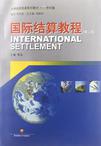国际结算教程
出版时间:2012-8 出版社:傅泳 西南财经大学出版社 (2012-08出版) 作者:傅泳 编 页数:235
内容概要
《大学经贸英语系列教材21世纪版:国际结算教程(第2版)》共分为三大部分计十三章。第一章至第五章为第一部分“票据理论”,主要介绍金融单据——汇票、本票、支票、代理行关系以及国际结算的特点。第六章至第十章为第二部分“支付方式”,主要介绍汇票、托收、信用证、国际保理以及保函和备用信用证。第十一章至第十三章为第三部分“商业单据”,主要介绍不同支付方式下的汇票、发票、装箱单、保险单、提单、空运单以及其他运输单据,并介绍国际结算下的银行审单业务。这三大部分彼此依存,共同组成国际结算的实务运作系统。 全书用英语编写,内容丰富,讲述深入浅出,具有较强的实务操作性。本书旨在让读者于纯英语的语言环境中学习国际结算的专业知识,提高直接使用英语从事该项业务的能力。
书籍目录
第一部分 Chapter One Introduction Section One What is International Settlement Section Two Characteristics of Modern International Settlement Chapter Two Credit Instruments (Ⅰ) - Bills of Exchange (Ⅰ) Section One Introduction Section Two Bills of Exchange Chapter Three Credit Instruments(Ⅰ) - Bills of Exchange (Ⅱ) Section One Classification of Bills of Exchange Section Two Finance under Bills of Exchange Chapter Four Credit Instruments (Ⅱ)-Promissory Note and Cheque Section One Promissory Note Section Two Cheque Section Three Functions of Credit Instruments Chapter Five Correspondent Banking Relationship Section One Introduction Section Two Establishment of Correspondent Banking Relationship Section Three Intemational Funds Transfer 第二部分 Chapter Six Payment Methods (Ⅰ) - Remittance Section One General Introduction to Payment Methods Section Two Remittance Section Three Application of Remittance in Intemational Commercial Settlement Chapter Seven Payment Methods (Ⅱ) - Collection Section One Introduction Section Two Types of Collection Section Three Characteristics, Risks and Banks Liabilities under Collection Section Four Finance under Documentary Collection Chapter Eight Payment Methods (Ⅲ) - International Factoring Section One Introduction Section Two Types and Procedures of Factoring Section Three Characteristics of Intemational Factoring Chapter Nine Payment Methods (Ⅳ) - Letter of Credit Section One Introduction Section Two The Contents and Procedure of UC Section Three Types of Letter of Credit under UCP 500 Section Four Types of Credit for Special Purposes Section Five Amendment, Characteristics, Advantages and Risks of L/C Section Six Finance under Letter of Credit Chapter Ten Payment Methods (Ⅴ) - Letter of Guarantee and Stand-by Credit Section One Introduction to Letter of Guarantee Section Two Types of Guarantee Section Three Practices and Characteristics of a Guarantee Section Four Stand-by Letter of Credit 第三部分 Chapter Eleven Documents (Ⅰ) - Draft, Commercial Invoice, Packing List and Insurance Policy Section One General Introduction to Documents Section Two Draft under Remittance, Collection and Letter of Credit Section Three Commercial Invoice and Packing List Section Four Insurance Documents Chapter Twelve Documents (Ⅱ) - Transport Documents Section One Marine Bills of Lading Section Two Sea Waybill and Air Waybill Section Three Other Transport Documents Chapter Thirteen Documents (Ⅲ) - Other Commercial Documents and Documents Examination Section One Other Commercial Documents Section Two Documents Examination Section Three Bank's Common Practices in the Event of Documents Discrepancies Bibliography
章节摘录
版权页: 插图: Chapter Five Correspondent Banking Relationship Section One Introduction 1. The Importance of Correspondent Relationship In order to be an "intermediary" of its international customers/traders and to "smooth-out" the funds transfer for them,bank should go internationally either through establishing its own foreign presence or through cooperating with other foreign banks.The result is a worldwide banking network which has undoubtedly facilitated international banking operations. A bank can expand its business abroad in various ways.The first method is to achieve its own foreign presence by setting up its own representative offices,agencies,subsidiaries or branches in foreign countries,and the second alternative is to establish a correspondent banking relationship with a foreign local bank.The major difference between these two methods is that in the first method,the home bank maintains ownership over its foreign offices,subsidiaries or branches while in the second method,the correspondent bank is a separate local bank,independent from the home bank. (1) The First Method-to create a bank's own foreign presence (A) Representative office. A representative office is established in the host country to do business on behalf of the home bank.However,the office can not conduct normal banking operations such as accepting deposits,issuing loans,dealing with drafts and letters of credit.The basic function of a representative office is to collect and provide information for the home bank.It is the lowest form of a presence in a foreign country. (B) Subsidiary and affiliate. A subsidiary is a separately incorporated bank,owned entirely or in large by a parent home bank.It is controlled by the parent bank though part of the equity may belong to local banks or other foreign banks.Affiliate is also a locally incorporated bank which is partly owned by but not necessarily controlled by the parent bank.Similar to a branch,both the subsidiary and the affiliate can perform normal banking business.
编辑推荐
《大学经贸英语系列教材21世纪版:国际结算教程(第2版)》不仅可以作为国际经济贸易专业本、专科学生以及研究生的教材,也可以作为银行、公司相关从业人员以及管理人员的参考资料。
图书封面
评论、评分、阅读与下载
用户评论 (总计1条)
- 书没有破,质量很好,很喜欢
